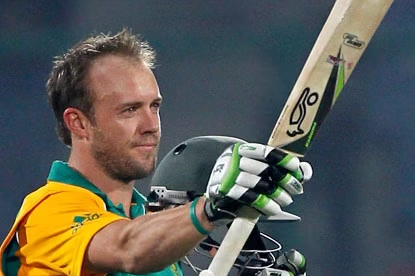Former South African cricket star AB de Villiers, often celebrated as one of the most versatile and innovative batsmen in the history of the game, has recently shared an interesting insight into his career. Known for his ability to dominate bowlers of all kinds—whether fiery fast bowlers or crafty spinners—AB de Villiers Says Muhammad Asif Was His Toughest Opponent
The revelation has sparked excitement and nostalgia among cricket fans, especially those who witnessed Asif’s short yet remarkable international career. While de Villiers faced many great bowlers—legends like Dale Steyn, James Anderson, Muttiah Muralitharan, and Brett Lee—he admitted that Asif’s style of bowling was on a different level and uniquely challenging.
A Genius With the Ball
Muhammad Asif, often called the “magician of swing” by cricket pundits, was not known for raw pace. Instead, he relied on exceptional accuracy, movement off the seam, and the ability to read a batsman’s weaknesses within a few deliveries. His skill lay in making even good pitches seem difficult for batting. De Villiers pointed out that Asif’s deliveries seemed harmless at first glance, yet they would move just enough in the air or off the pitch to beat the bat.
For batsmen like de Villiers—accustomed to countering express pace with quick reactions—the challenge with Asif was mental. You could never quite predict which way the ball would move. A delivery that appeared to be heading towards off-stump could suddenly nip back in sharply, while one that looked like it might swing in could hold its line and take the edge.
Why De Villiers Struggled Against Asif
In his statement, de Villiers explained that Asif’s main weapon was his “invisible danger.” Unlike bowlers who intimidate with speed, Asif would build pressure slowly, over after over, until he forced an error. He possessed the rare ability to bowl six different balls in an over, each with a slight variation in seam position or release point, and yet all landing exactly where he wanted them to.
For a batsman, this meant constantly second-guessing yourself. If you committed too early to a shot, the ball would seam away and catch the outside edge. If you played too cautiously, Asif would trap you with a delivery that jagged back in and hit the pads. His control over line and length made it feel like he was “bowling with a remote control,” as some former players have put it.
Clashes Between the Two
De Villiers and Asif faced each other several times in international cricket during the mid-2000s. One memorable encounter was in 2007, during South Africa’s tour of Pakistan, where Asif’s disciplined bowling troubled de Villiers repeatedly. While the South African did manage to score runs, he admitted that he never felt comfortable at the crease when Asif had the ball in hand. x
Even in limited-overs cricket, where batsmen usually dominate, Asif had the knack for making the new ball talk, forcing players like de Villiers to focus more on survival than aggressive stroke play.
Praise From Around the World
De Villiers is not the first high-profile cricketer to shower praise on Muhammad Asif. Legendary batsmen such as Ricky Ponting, Kevin Pietersen, and Hashim Amla have also acknowledged that Asif was among the toughest bowlers they faced. Ponting once remarked that Asif’s ability to seam the ball both ways without a change in action was “pure artistry.”
This admiration comes despite Asif’s career being cut short due to controversies, including a spot-fixing scandal that led to a ban from international cricket. Many cricket experts believe that had he continued playing, Asif could have been remembered alongside the all-time great fast bowlers.
A Bowler Ahead of His Time
In modern cricket, where batsmen often dominate due to flat pitches and shorter boundaries, Asif’s style of bowling stands out as a reminder of the beauty of skill over brute force. His success came from reading conditions perfectly, setting up batsmen with patience, and executing plans with precision.
De Villiers highlighted that playing against Asif wasn’t just about technique—it was also about mental endurance. Even the smallest lapse in concentration could lead to your dismissal. For a player known as “Mr. 360” for his ability to hit shots all around the ground, it says a lot that he found Asif so difficult to score against.
The Legacy of Muhammad Asif
While his career numbers—106 Test wickets and 46 ODI wickets—might not match some of the more prolific bowlers, those who played against him know the real story. His strike rate, economy, and average in Test cricket are comparable to some of the best in the game. More importantly, the respect he earned from top batsmen speaks volumes about his class. READ NEXT https://elevenpakistan.com/openai-launches-gpt-5-bringing-advanced-ai/
AB de Villiers’ recent comments have reignited discussions about what could have been if Asif’s career had not been derailed. Fans often wonder how he would have fared in today’s era, with the pink ball under lights or on pitches offering even a hint of movement. Many believe he would still be a nightmare for batsmen, just as he was for de Villiers.
Conclusion
In cricket, respect between opponents is earned through skill, perseverance, and the battles fought on the field. AB de Villiers, who has faced some of the fastest and most feared bowlers in cricket history, placing Muhammad Asif at the very top of his “most difficult” list is a testament to the Pakistani pacer’s genius.
For cricket lovers, this reminder of Asif’s artistry brings back memories of a bowler who could make the ball dance without apparent effort. For younger fans, it’s an invitation to revisit old footage and witness why one of the greatest batsmen of the modern era considered him his toughest opponent.
READ NEXT



